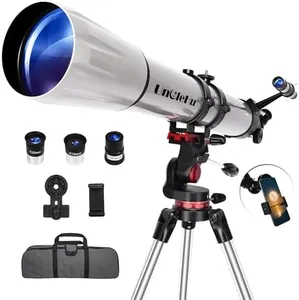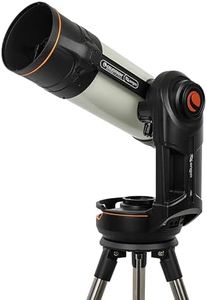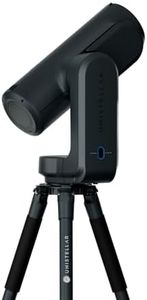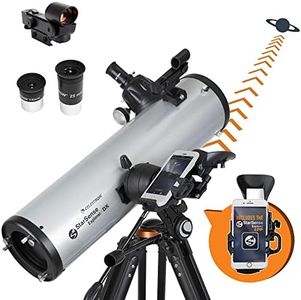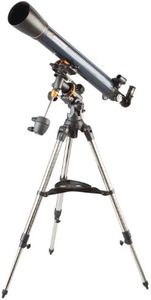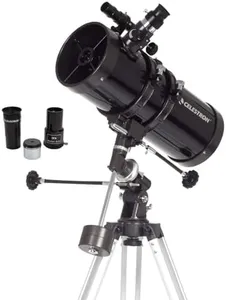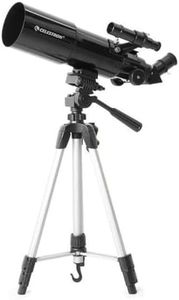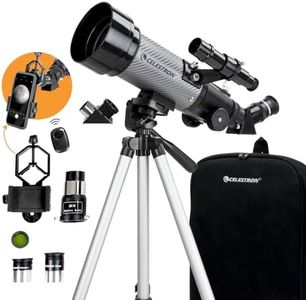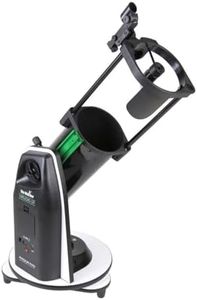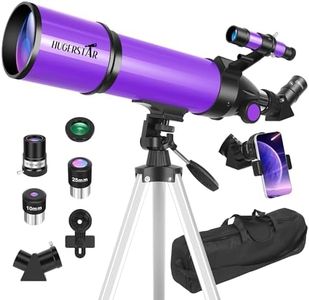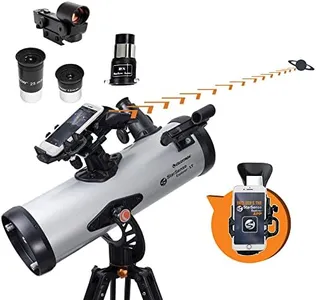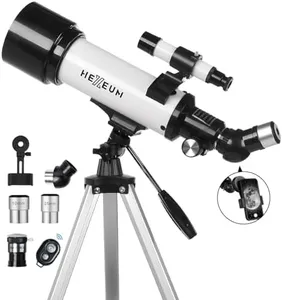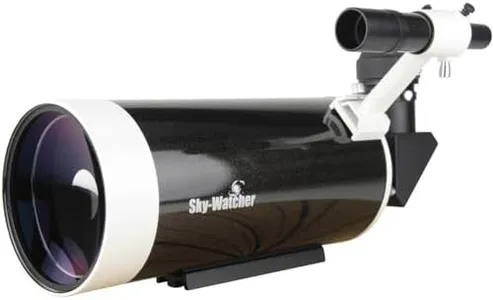10 Best Available Telescopes 2025 in the United States
Our technology thoroughly searches through the online shopping world, reviewing hundreds of sites. We then process and analyze this information, updating in real-time to bring you the latest top-rated products. This way, you always get the best and most current options available.

Our Top Picks
Winner
Celestron – Origin Intelligent Home Observatory – All-in-one Astroimaging and Stargazing Smart Telescope – 6-inch RASA Telescope – Fully-Automated GoTo Mount – User-Friendly – iOS/Android Compatible
Most important from
28 reviews
The Celestron Origin Intelligent Home Observatory is a standout choice if you're looking for a smart, easy-to-use telescope that combines stargazing with astrophotography. Its 6-inch aperture and fast f/2.2 focal ratio allow it to collect bright, clear images, making celestial objects like galaxies and nebulae appear detailed and colorful. What sets it apart is its patented RASA optical design and AI-powered image processing, which automatically stacks photos in real-time—this means you get beautiful astrophotography results without needing to manage complicated settings.
The fully-automated GoTo mount with StarSense technology simplifies setup and alignment, so you can start observing within minutes, which is great for beginners or those who want a hassle-free experience. The accompanying app for iOS and Android offers an intuitive interface to explore the night sky and control the scope, adding to its user-friendliness. The telescope is relatively large and heavy (over 40 pounds), making it less portable if you plan to travel often. Also, while it has manual and automatic focusing options, the system relies on battery or AC power, so you'll need to ensure a power source is available during use.
This model is ideal for astronomy enthusiasts who want advanced features and automated astrophotography at home, rather than casual users seeking a lightweight, easily portable telescope.
Most important from
28 reviews
Odyssey - UNISTELLAR Smart Telescope (no Eyepiece), 85mm f/3.9 (320mm) Digital & Computerized, App-Controlled Motorized Alt-Az, Enhanced Vision, RAW/FITS Export, 64GB, Tripod, 5h Battery (Black)
Most important from
37 reviews
The Unistellar Odyssey is a smart digital telescope designed to make stargazing easier and more accessible, especially for beginners or casual observers. Its 85mm aperture allows for good light gathering, making planets, galaxies, and nebulae visible in impressive detail when combined with its Dynamic Signal Amplification technology. This feature enhances faint celestial objects, showing them in vivid color, which is a standout advantage compared to many traditional telescopes.
The telescope's autofocus and multi-depth technology mean you don’t have to manually adjust focus or switch settings to view objects at different distances, making observing simpler and more enjoyable. Its altazimuth mount is user-friendly for quick setup and movement, though it may be less precise than equatorial mounts for advanced tracking. Portability is decent; weighing about 6.5 kilograms (14.3 pounds) and measuring roughly 17" by 8" by 5", it’s compact enough to carry to dark-sky locations but not extremely lightweight. Being battery-powered adds convenience but means you’ll need to keep batteries charged.
One of the biggest strengths is the smart star finder that automatically points and tracks celestial objects, allowing users to start viewing within minutes without prior astronomy experience. The 85mm aperture is on the smaller side, limiting the telescope’s ability to view very faint deep-sky objects compared to larger models. It suits beginner to intermediate users who want a hassle-free, tech-enhanced stargazing experience with decent portability and sharp, colorful views. It may not meet the needs of those wanting the highest magnifications or precise manual control for astrophotography or advanced observing.
Most important from
37 reviews
Celestron - NexStar 130SLT Computerized Telescope - Compact and Portable - Newtonian Reflector Optical Design - SkyAlign Technology - Computerized Hand Control - 130mm Aperture Grey
Most important from
2147 reviews
The Celestron NexStar 130SLT is a computerized telescope with a 130mm aperture, making it capable of capturing substantial light for viewing celestial objects like Saturn's rings, Jupiter's cloud bands, and the Moon. Its Newtonian Reflector optical design is known for providing clear and bright images. The computerization feature is handy for beginners as it includes a database of over 4,000 celestial objects and utilizes SkyAlign technology to help locate and track objects accurately. This makes it user-friendly for those who may not have extensive knowledge of the night sky.
The inclusion of a computerized hand control enhances the ease of use further by allowing users to navigate the sky without manual adjustments. The telescope's portability is a significant advantage, making it suitable for travel and outdoor use, such as camping trips, thanks to its compact form factor. However, it requires batteries for operation, which can be an inconvenience if not planned for in advance. The Altazimuth mount is easy to use but may not provide the precision of an equatorial mount when it comes to tracking objects over extended periods.
The package includes two eyepieces (20mm and 9mm), which offer different magnification levels, but additional eyepieces might be required for specific viewing preferences. The NexStar 130SLT comes with a free Starry Night software download, which is a valuable educational tool for users to learn more about astronomy. The product is backed by a two-year warranty and customer support, adding to its reliability. The Celestron NexStar 130SLT is well-suited for beginners and casual stargazers who are looking for a portable and easy-to-use telescope with computerized capabilities, though more experienced users might seek more advanced features and mounts.
Most important from
2147 reviews
Buying Guide for the Best Available Telescopes
Choosing the right telescope can be a thrilling experience, especially if you're passionate about astronomy. The key to finding the best telescope for you is understanding the different specifications and how they align with your needs. Whether you're a beginner or an experienced stargazer, knowing what to look for will help you make an informed decision and enhance your viewing experience.FAQ
Most Popular Categories Right Now
